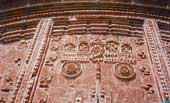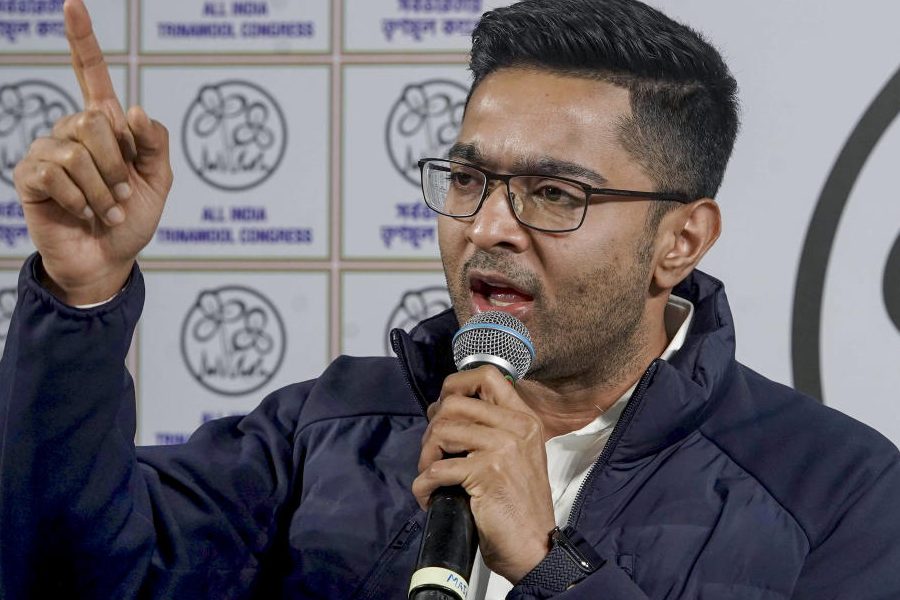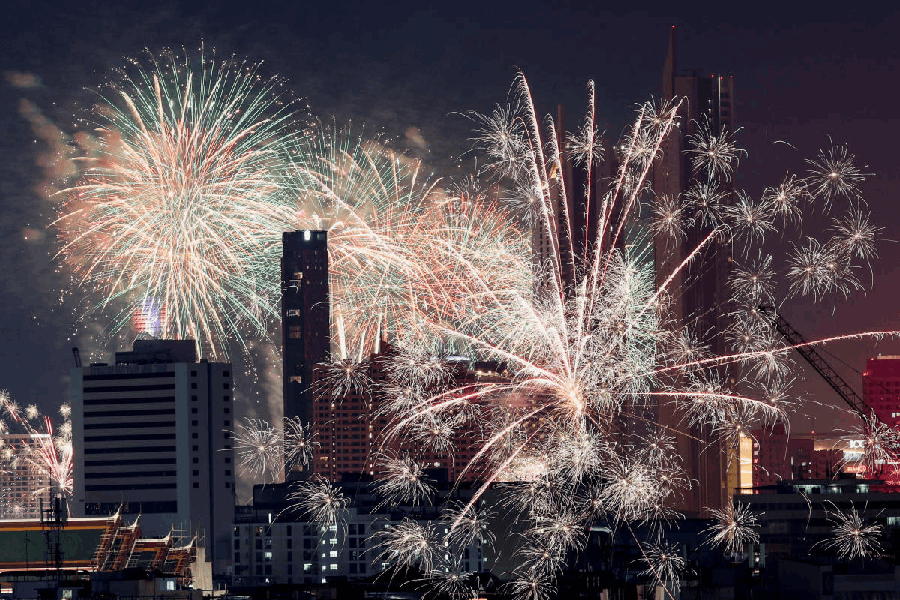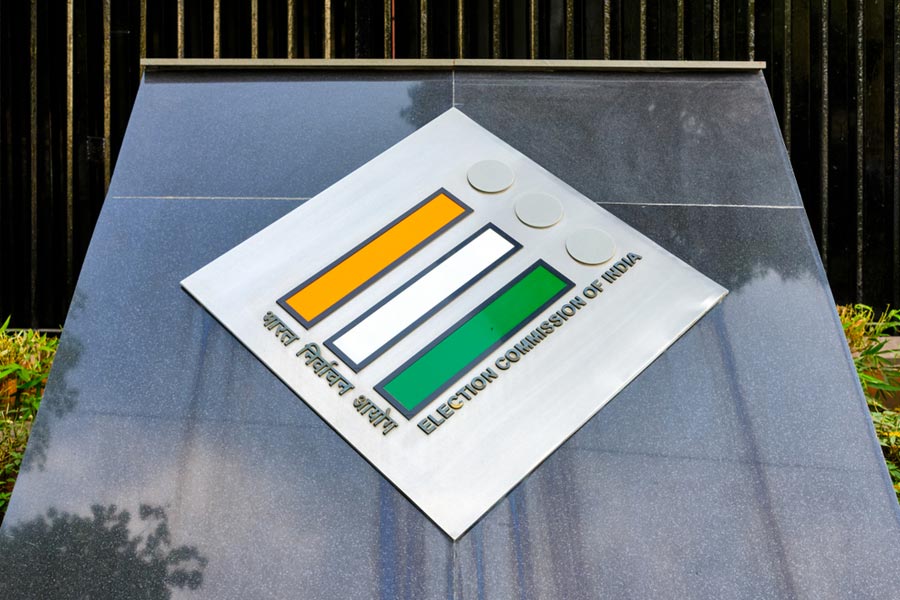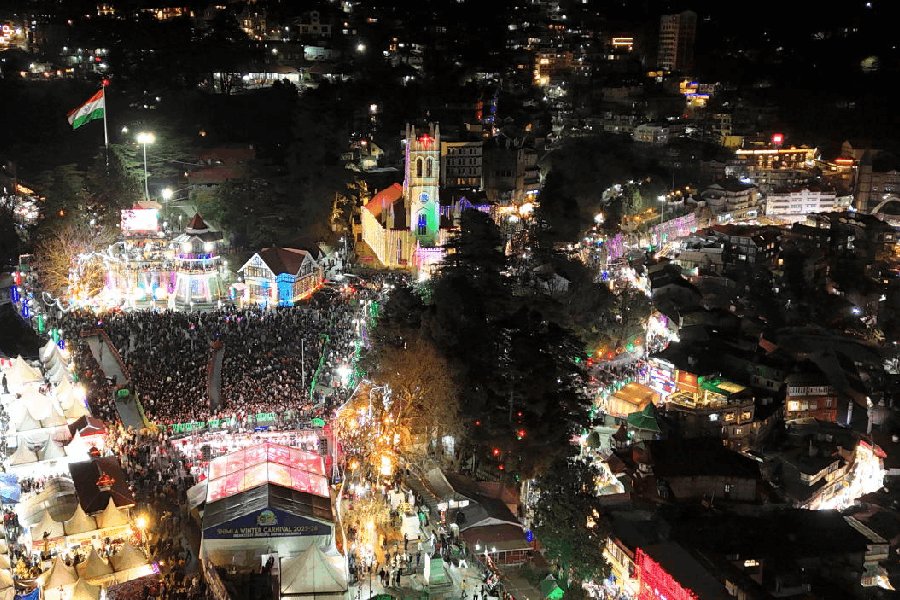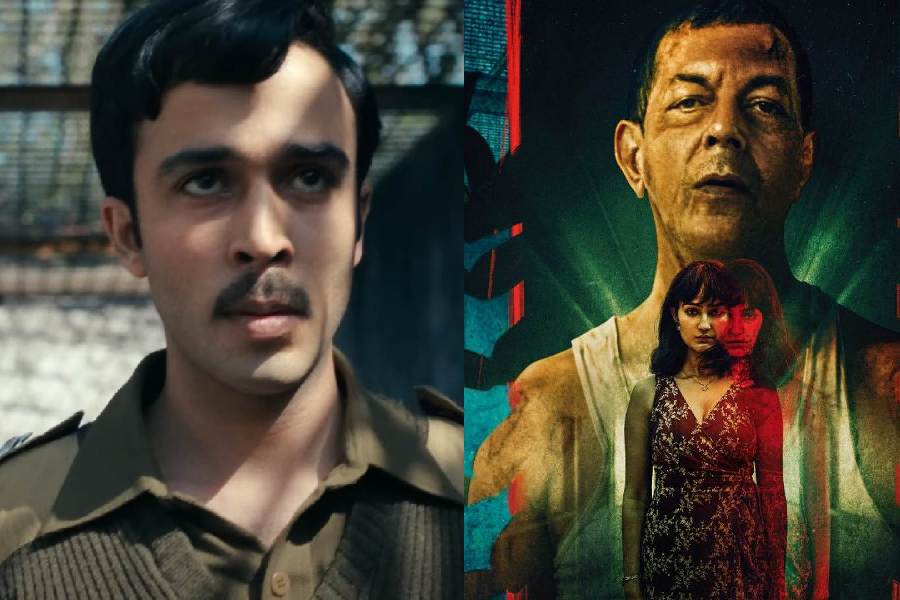 |
One can?t but be aware of history and landmarks on the way to Malancha. Kharagpur, the nearest railway station, has the longest platform in Asia, which measures all of 2,733 ft. The town itself was thrust into the limelight in 1951, when Jawaharlal Nehru decided to start India?s first Indian Institute of Technology (IIT) here. He called IIT Kharagpur a temple of modern India.
Speaking of temples, Malancha, a stone?s throw from Kharagpur, houses a couple from medieval India, making it an ideal getaway for those who love history.
Even half a century ago, Malancha was nothing more than a sleepy hamlet. Kharagpur?s rise to prominence, and consequent urbanisation, has led to the development of Malancha. Today it is considered an extension of Kharagpur.
Five km from the station, and on one side of Malancha, stands a Ramayana temple, which is quite uncommon in Bengal. Known as Dakshina Kali Mandir, the temple is an excellent example of atchala construction in the mould of the Bengal school of architecture.
According to most, the temple was built by Gobindaram Roy of Mahashay royal family of Jakpur in 1634. Some historians, however, argue that it was established in 1712. The temple, 25.5-ft-long and 23-ft-wide, stands majestically tall at 50 ft in a fenced compound. Weather had taken its toll on the natural colour of the terracotta structure, so it has been painted red.
The front is adorned with wonderful sculptures, describing episodes from the epic. The battle of Ram and Ravana are carved to perfection. Characters like Lakshman, Bali, Sugrib and the rakshasas are also etched in great detail.
Hindu motifs like lotus, kalas, chakra and the figure of the mahishasurmardini can be seen on the walls. The side panels contain terracotta figures of dancing girls and men playing musical instruments.
Terracotta chariots dot the upper portion of the temple main gate. The deity worshiped here is Dakshina Kali.
Close by stands the Nandaneshwar Shiva temple. It is quite ordinary to look at, but significant because it bears characteristics of the the Orissa school of architecture.
The temple has three distinct parts ? naat mandir, jagmohan and garva griha. The jagmohan is built in pira style, which is very common in the neighbouring state. This 40-ft-high makra stone structure was built in the year 1719 .
 |
Decades ago, the region was a hub of activity of the Bengal Nagpur railway. A huge labour population and several technical experts from south India had moved here from Andhra Pradesh and Tamil Nadu. Most of them never returned. They instead tried to recreate a little south India at Malancha.
The majestic Balaji temple can make one feel as if one is in the heart of south India. The temple was built in early 1920s by local residents who were born down south. It was rebuilt and expanded later, and has become the prime attraction of Malancha.
Built in the Dravidian style, the temple is modelled on the Balaji temple of Tirupati. The entire outer surface is covered by figures of Hindu gods and goddesses, and characters from epics. Figures of Narayana and Laxmi are the most conspicuous. Vishnu in repose on a bed of serpents and his various avatars have been chiselled impeccably. Episodes from the Ramayana are depicted on the panels of this temple as well.
The most significant aspect of the temple is the statue of Shivaji worshipping Devi Bhavani or Durga. Sculptures of elephants and lions are abundant. Garuda, the mount of Vishnu, features on four sides of the entrance. All the figures are in white. Features of the south Indian school of temple architecture, including mahadwara, pradakshinam and ranga mandapam, can be seen here.
Those interested, can also visit the 200-year-old Sidheshwari temple. It was covered in terracotta sculptures, but they were destroyed during renovation.
The Union Church, popularly known as Ward Memorial Baptist Church, is another attraction in Malancha. Built in 1921, the white church is a pale shadow of its past. The towers have been destroyed. However, the church is well- maintained inside. From a distance, the green fields and the red cross atop still give it a picture-postcard look.
Prior to Independence, the lives of the Anglo-Indian and European communities revolved around this structure. Old-timers fondly remember a painting of Lewin Brown that was kept in the church in the early 1940s. Managed and funded by American Baptist Foreign Mission Society, the church is a member of the Bengal Orissa Bihar Baptist Church Association.
Near the church is a place called Inda, the site of a Khargeshwar Mahadev temple, built by Raja Kharag Singh. According to local residents, Kharagpur gets its name from the temple which is built in Rekh Deul style of Orissa.
The field opposite the temple is known as Hirimbadanga math.It is believed that Bhima and Hirimba fought here.
The red St Andy?s church, built in 1928, is also worth a visit. It is close to the Kharagpur station.
Going:
Kharagpur is the nearest railway station. It is hardly three hours by local train from Howrah. Rupashi Bangla Express takes two hours to reach Kharagpur from Howrah and is the best option. Buses are available from Esplanade. CSTC buses leave for Kharagpur every hour. From the station, cycle-rickshaws and autorickshaws are available for Malancha. Union Church is on the way
Staying:
Good restaurants, packed food and mineral water are available. Night stay, however, might be a problem
(Metro on Sunday thanks reader SOMEN SENGUPTA for this contribution. Pictures by author)

